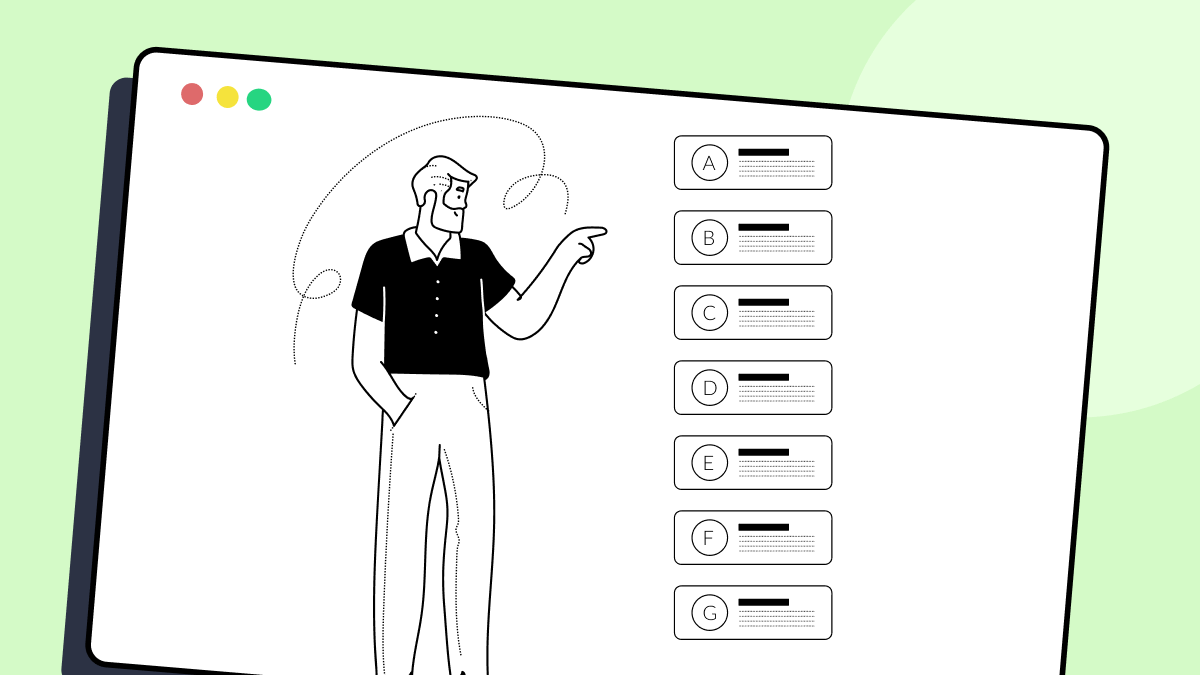The Seven Habits of Highly Effective Testers
David Tzemach
Posted On: January 16, 2023
![]() 11205 Views
11205 Views
![]() 6 Min Read
6 Min Read

Stephen R. Covey’s book The Seven Habits of Highly Effective People, which was first published in 1989, has helped countless people create positive habits that would enable them to achieve interdependent effectiveness in their personal and professional lives. The seven habits are discussed in this article, which frames them for very successful testers. These are the seven habits:
- Be Proactive
- Begin with the End in Mind
- Put First Things First
- Think Win/Win
- Seek First to Understand, then to be Understood
- Synergize
- Sharpen the Saw
Be Proactive
In every software project, a tester’s objective is to guarantee that a high-quality product is produced. You have two options when determining what went wrong with software projects that fail due to low quality: you can either be proactive or reactive. Reactive persons tend to attribute difficulties or barriers to other people and external factors. Being proactive will allow you to accept responsibility for the mistakes and come up with solutions for future initiatives. After a project is over, your team should do a “post mortem” or “retrospective” in which you candidly discuss the project’s successes and failures. Here are three suggestions for approaching upcoming undertakings with initiative:
- Communicate Effectively – Everyone must be aware of the status of the testing effort during Testing. Provide daily status updates through email or a discussion forum. Incorporate metrics such as defect counts, requirement coverage, the number of test cases executed, passed, failed, pending execution, and so on.
- Analyze Traceability – Creating a traceability matrix of test scenarios for each requirement helps you assess the test cases’ scope, testability, and completeness. Hold continuous team meetings to discuss your test scenarios to guarantee you have a thorough understanding of the need and enough test coverage. Share your test scenarios for the developers to examine before coding to reduce rework and Testing time.
- Effectively Describe Defects – When reporting defects, take the time to provide a thorough defect description, procedures to replicate, and expected results. Include screen photos and as much detail as is required to replicate the issue properly. This will cut down on QA rework.
Begin with the End in Mind
The ultimate objective of a software project should be to deliver high-quality solutions that exceed the clients’ requirements. Before you begin coding, develop a set of desired outcomes against which you will measure the project. For example, your success criteria may be that the program provides particular goals, has little or no known errors (or a limited number of minor defects), is well documented, and is simple to use.
By establishing the criteria for success in advance, you may objectively assess whether or not the project met the expectations. When establishing the success criteria, enlist the assistance of all group members (project managers, product managers, testers, developers, and so on). By obtaining a team perspective on the success criteria, you will have more substantial and quantifiable criteria and much greater team buy-in.
Put First Things First
It is vital to prioritize your work effort. You must prioritize the most critical items first, then the less important ones. For example, everyone believes that negative Testing is necessary to guarantee that software manages circumstances in which the user does things that are not routinely done and that the product was not meant to handle. However, compared to positive Testing, Negative Testing is less essential. Begin your testing effort by thoroughly evaluating the program to ensure it functions as intended. Afterward, carry out your negative tests (testing bounds, invalid data entry, etc.).
Think Win/Win
In many firms, developers and testing staff blame each other and cause conflict. This may be highly disruptive and significantly impact the quality of the software project and the user experience. Both test and development staff should work together to ensure that the customer obtains a high-quality product. If this is a team’s unilateral aim, it makes sense for all team members to support and encourage each other so that when the product is provided with high quality and the customer is satisfied, everyone in the team shares in the enthusiasm of a happy customer. Here are a few pointers to help you establish a trusting, respectful workplace and a win-win team:
- Encourage Others – Congratulate and congratulate team members who do an excellent job. Inform your (and their) management how well you believe they perform. Express your gratitude for their efforts.
- Share Your Expertise – Instead of keeping your knowledge to yourself, share it with others.
- Assist Distress Team Members – If you observe your team members struggling, jump in and volunteer to help. If you make an offer, be sure that you follow through and that they receive the support they require. You may need guidance in the future; therefore, assisting may create a win-win situation for everyone.
Seek First to Understand, then to be Understood
Many of us have a horrible tendency to tune out a discussion and not listen because we passionately want to be acknowledged. Every tester and team member has unique experiences, viewpoints, and goals. To solve a problem, you must first listen closely and carefully to comprehend it. When you believe you have all the data, ask for suggestions for possible solutions. Having multiple possibilities enables better talks and helps team members to adjust early answers into more far-reaching ideas that handle the problem more directly. If you disagree with a strategy, don’t criticize the person who proposed it. Instead, explain why you believe there is a superior strategy based on your previous experiences.
Synergize
A synergized team requires teamwork. A synergized team is made up of diverse team members with varied abilities, backgrounds, and viewpoints. Encourage these differences while providing your staff with tools to optimize efficiency. Highly collaborative teams communicate by sharing calendars and providing status updates in discussion forums, so everyone knows what the other is doing and accomplishing. These teams note all tasks completed daily, the number of hours worked, the number of hours remaining, and any deviations from the plan.
Sharpen the Saw
Productive testers recognize the need to improve their abilities and are eager to learn new methodologies, best practices, and strategies. They are insatiably curious and devour any testing book they can access. They learn how to simplify their duties by automating test scenarios and using best practices that save QA time and improve product quality. They keep connected to the testing community by visiting testing forums. They also understand when to have a good time. They refresh their batteries by enjoying wonderful trips and engaging in extracurricular hobbies and activities.
Got Questions? Drop them on LambdaTest Community. Visit now
















